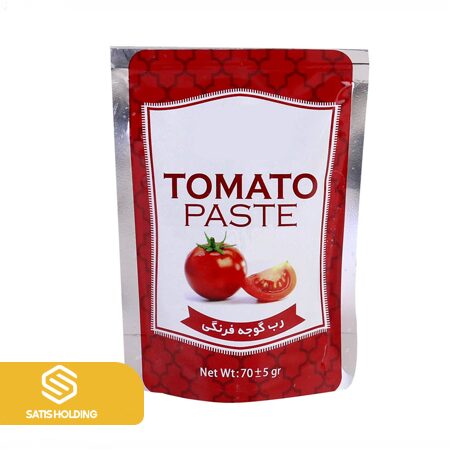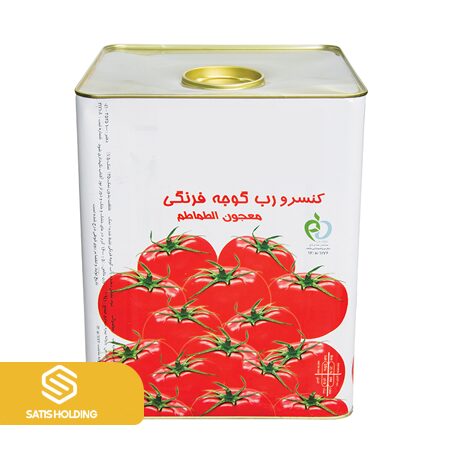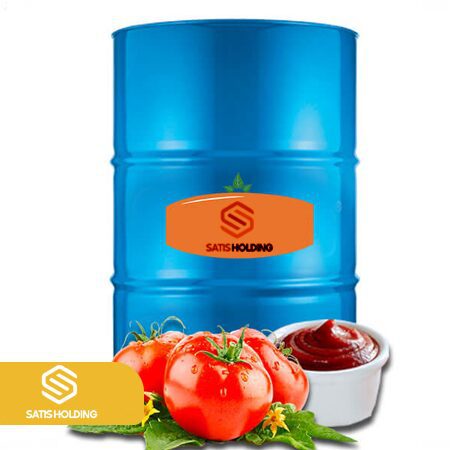Tomato Paste
Italy is the birthplace of tomato paste. For the first time, Italian chefs decided to prepare a sauce from tomato juice to flavor their pasta with a different and new taste. This incident turned the cities of southern Italy into the cradle of tomato paste. At present, Mediterranean border countries are active producers and consumers of tomato paste in the world.
Types of tomato paste packaging
Metal cans in weights:
350 – 400 – 800 – 2200 – 4000 and 5000 grams
Glass paste in weights:
250 – 500 – 700 – 1000 and 1500 grams
Aleppo in weights:
10000 and 17000 grams
Barrels in weights:
235 kg aseptic
Barrels in weights:
220 kg
Sachet in weights:
70 grams
Double pack in weights:
90 and 200 grams
Tomato export and import statistics
Tomato consumption per capita in Iran
Export of tomato paste in Iran
Iran’s tomato paste export has been increasing in recent years, so that only in 2016, with more than 25% growth compared to the previous two years, it reached 133,000 tons per year.
Due to its diverse climate, Iran has always been among the top 10 tomato producing countries in the world. Tomatoes are grown almost all year round in different parts of the country and this is thanks to Iran’s 4 seasons. For example, in hot seasons, cold regions such as Khorasan, Zanjan and Golestan and in cold seasons, tropical regions such as Fars and Bushehr produce tomatoes.
The export of Iran’s tomatoes, both fresh and processed, is one of the sources of foreign currency and a factor in the country’s economic prosperity. And currently, Iran ranks sixth in the world in terms of export of tomato paste industry products. About 7 million tomatoes are produced in Iran every year. Of this amount, about 800,000 tons are allocated for the production of various tomato products, and more than 130,000 tons are exported abroad.
The most important export destinations of tomatoes and tomato paste
Iraq, Turkey, Russia, UAE, Afghanistan, Kazakhstan and Oman
Tomato export and import statistics
Important points in the export of tomato paste
Exporting tomato paste to any country has its own principles and standards. Some countries like Iraq, Oman and UAE are lenient in this regard and others like Russia are strict. Packaging of tomato paste for export, whether in metal and glass cans or in bulk in barrels and tins, should also be done according to health standards.
To produce thicker and high-quality tomato paste, more tomatoes should be consumed. The storage conditions of tomato paste in metal or glass cans depend on its Brix number. For example, if the packaging is a glass or a can, the standard Brix number is between 16 and 27. If the tomato paste is transported in bulk and in barrels, the Brix number should vary between 38 and 40.
BRICS standard approved for exporting tomato paste to Afghanistan is equal to 10.
The approved BRICS standard for exporting tomato paste to Iraq is between 18 and 20.
The approved BRICS standard for exporting tomato paste to Russia is between 32 and 38.
- pasteurized
- Easy maintenance
- Thick and economical
- high durability
- Preservation of tomato properties
- Has quality standards
Tomato paste metal can
Quality tomatoes are used to prepare tomato paste. Currently, tomato paste is available in various glass and metal cans in the market.
The reason for the shelf life in metal cans is that the possibility of sterilizing the can and keeping it in the pasteurizer is better and more, and also the amount of heat that can be introduced into the can is more than that of glass.
Packaging of tomato paste
Although the packaging is done according to the customer’s order, the Iranian customs, at times, imposes restrictions on the packaging of tomato paste for export. The exporter must be aware of the latest directives and fully comply with their provisions to avoid possible problems and losses.
According to their market consumption, customers order sachet, can, glass and even bulk or aseptic packaging in different weights. Today, there is a common food packaging method called Aseptic, which has many fans.
In the aseptic method, food is produced in a short time and under vacuum to maintain its quality well. These products are packaged in sterilized bags or large containers and have a long shelf life without the need for refrigeration. Aseptic paste has a shelf life of 2 to 3 years.
It should be noted that septic paste is produced only for export and not for domestic consumption. The weight and packaging material also depends on the customer’s order.
Types of tomato paste packaging
- Metal cans in weights (350, 400, 800, 2200, 4000, 5000 grams
- Glass paste in weights (250, 500, 700, 1500, 1000 grams
- Aleppo (10000 and 17000 grams)
- 235 kg Spitak barrels
- 220 kg barrels of tomato paste
- Sachet 70 grams
- Two packs (90 and 200 grams)
Ingredients and characteristics of tomato paste
- Use healthy and ripe tomatoes
- 1.5% table salt
- without preservatives
- No color enhancers
- It has all the necessary standards from the Food and Drug Organization
- In a variety of stylish and unique packaging

Rab Sashe

Lord of Aleppo

Rab Doi Pak

can of paste

glass paste

barrel paste
Examples of export products
Frequently Asked Questions
Due to the wide network of suppliers, this company will be able to supply your orders of any size.
There are extensive relations with neighboring countries, but it is possible to send products to all parts of the world by Satis Holding’s overseas team.
Satis expert consultants in various fields are your answer in specialized fields.
